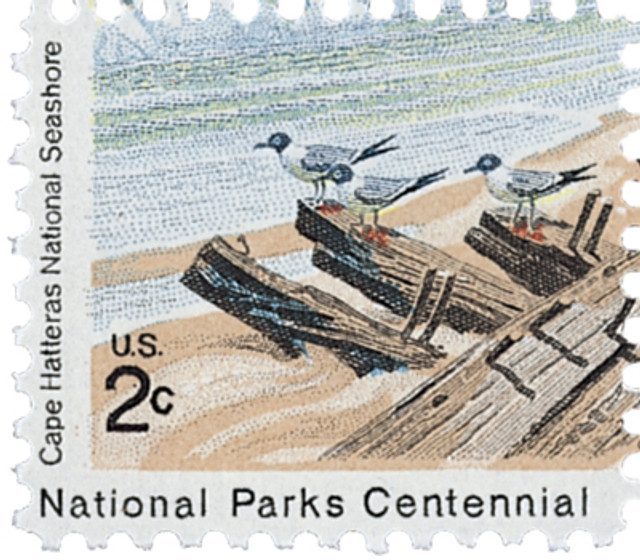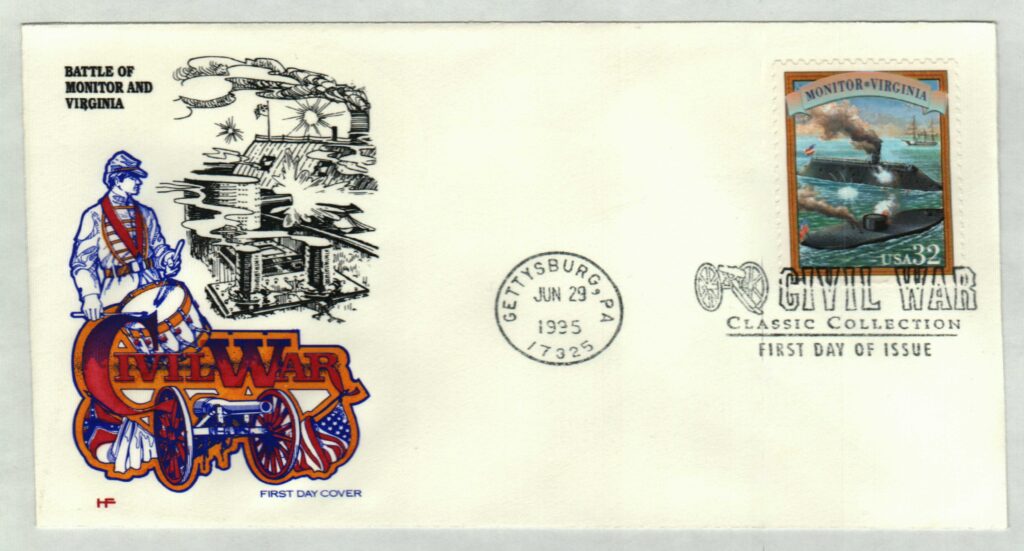On March 9, 1862, the USS Monitor and CSS Virginia (formerly USS Merrimack) fought in the first battle between two ironclad warships. The battle changed naval warfare around the world, as major navies halted construction of wooden ships to build iron monitors.
On April 17, 1861, Virginia seceded from the Union. Three days later, the United States Navy evacuated the navy yard near Norfolk, Virginia. The Union left so quickly, they abandoned equipment and did not destroy the structures as well as they intended to. The Confederate Navy immediately moved in and found gunpowder, construction materials, a dry dock, and over 1,000 heavy guns. The Federal troops had scuttled and sunk ships, including the USS Merrimack. The hull and engines were salvaged and rebuilt as the Confederacy’s first ironclad. On February 17, 1862, the newly commissioned ship was renamed the CSS Virginia, though it is commonly referred to as the Merrimack.
The Northern Navy was building an iron-plated steamship of its own. Swedish inventor John Ericsson designed a ship that would ride very low in the water. It was described as “a cheese box on a raft.” Unlike ships of its time, guns were not stationed along the sides, but two guns were housed in a round, rotating turret. This made it possible to fire at opposing ships from any direction, rather than only from the side. The USS Monitor was completed on January 30, 1862.
On the morning of March 8, 1862, the Merrimack steamed up the Elizabeth River to break the Union blockade of Hampton Roads. As it entered the “Roads,” or estuary, its first target was the Union sailing ship Cumberland. The wooden craft was no match for the ironclad. The Cumberland’s shells bounced off the iron plating. The Merrimack steamed right into the side of the Cumberland with its ram and the wooden boat sunk almost immediately.
The next ship under attack was the Union’s Congress. When the commander realized he was practically defenseless, he surrendered to the captain of the Merrimack. The USS Minnesota ran aground in water too shallow for the ironclad to reach, and darkness fell before much damage was done to the Union ship. The Merrimack returned to the naval yard for minor repairs. The commander planned to return in the morning to finish off the remainder of the Union fleet.
In the North, the Monitor was on its way to the Virginia coast. It arrived in the Chesapeake Bay on the evening of March 8 and traveled up the bay to Hampton Roads. Lieutenant John Worden was given orders to protect the grounded Minnesota.
When the Merrimack arrived the next morning to destroy the Union ships, it was met by the odd-looking Union ironclad. After hours of fighting, neither ship gained a clear victory. The shells that were so effective against wooden ships could not penetrate the thick metal armor. The Monitor withdrew temporarily when a shell fragment struck the pilothouse. The crew of the Merrimack thought the enemy was retreating, so they headed back to their harbor for much-needed repairs. When the Monitor returned, the opposing ship was gone, so the Union sailors assumed they had won the battle.
In the months following the battle, the Union blockade was strengthened by additional ironclads, and the North held on to Hampton Roads. This gave them continued access to the James River and the Confederate capital. Later in the year, the Confederates destroyed the Merrimack themselves when they realized the North had blocked their escape route.

Ironclads were used extensively in Civil War battles on the Mississippi and James Rivers, but the low profile of the Monitor proved a disadvantage on the open waters. While being towed to Beaufort, North Carolina, to help with the blockade there, it took on water and sank.
Both sides claimed victory in the “Battle of the Ironclads.” The governments praised the captains and crews for their bravery. News of the effectiveness of the iron-armored steamships traveled quickly to Europe. Production began immediately in England and France, and ironclads made wooden warships obsolete. The ships that took part in the Battle of Hampton Roads changed the face of naval warfare throughout the world.
| FREE printable This Day in History album pages Download a PDF of today’s article. Get a binder or other supplies to create your This Day in History album. |
Discover what else happened on This Day in History.




The first ships to be built of iron, were the ‘turtle’ ships of Admiral Lee (Li) of the Hermite Kingdom of Korea, in the 1500’s. He was also credited with the creation and introduction of the Korean language, which was based (derived) from the Chinese language. Early Korean had a number of Chinese characters in its script. Today one can still see certain ‘Chinese’ in Korean.